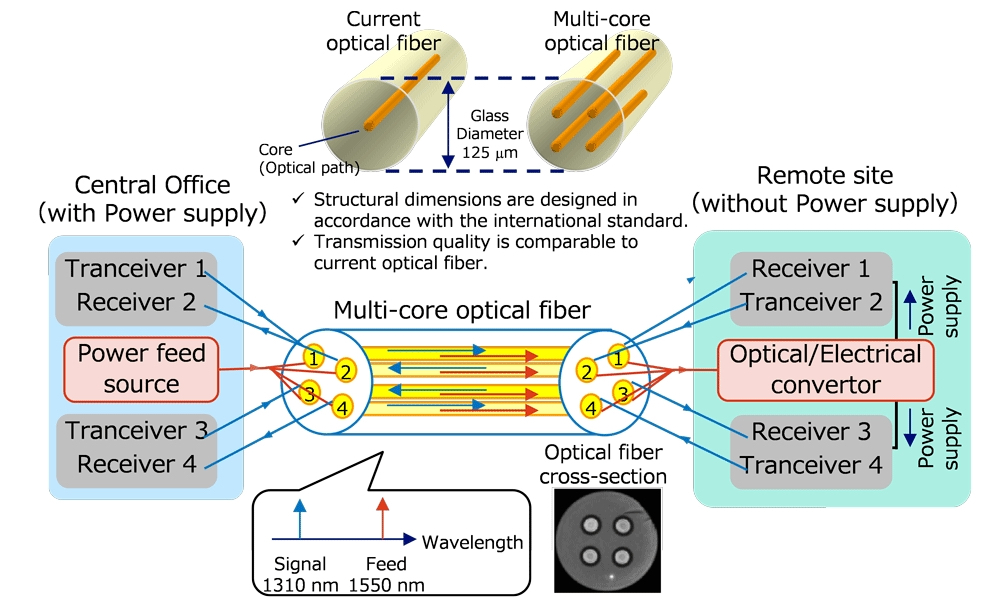Trial opens up high-speed optical comms in areas without a power supply and new IoT applications
Japan’s NTT and the Kitami Institute of Technology have claimed a world-first in supplying more than 1W of electrical power to a point without power supply more than 10km away using one single-mode optical fibre – without impacting communication speed or quality.
The telco said the achievement means new applications could be opened up for optical communications including IoT in hazardous areas, fibre to areas that don’t have a power supply or it has been interrupted and to establish emergency optical communication in the event of a disaster when the power supply is lost.
While there have been numerous experiments testing the limits of power over fibre (PoF), the vast majority of these were measured in metres, up to 200 metres. However all of these have faced challenges around three areas: damage to the connector endface, the phenomenon known as fibre fuse and damage to the fibre coating.
In essence, the output optical power of an optical fibre is proportional to the input optical power, but when the input light exceeds a certain threshold intensity, the output optical power saturates due to the phenomenon of transmission distance of the optical fibre increases and as the core of the optical fibre becomes smaller.
For this reason, it has been difficult to transmit optical signals of higher power over longer distances using optical fibres with small cores, which are suitable for high-speed optical transmission.
Trial details
NTT has been conducting research and development of multi-core optical (MCF) fibre – which the telco said it key to delivering its Innovative Optical and Wireless Network (IOWN) initiative – specifically investigatng optical power feeding and transmission using MCF.
The MCF has the same glass diameter as current optical fibres and each core has transmission characteristics equivalent to current optical fibres, so it can be used in combination with existing transmission equipment for ordinary optical communications.
In addition, since each core can be used independently (without optical signal interference between cores), any given core can be allocated for either power feeding or communication, or both.
NTT used four cores for the optical power feeding to maximise the output power. A power feeding wavelength was set at 1550nm. In addition, the telco used two of the four cores and assigned an uplink and downlink signal of 1310nm to each core to achieve bi-directional optical communications.

NTT achieved a highest 1W × 14.1km (14.1W・km) using the MCF and managing the undesired return light in the system, which reduces the output optical power. In addition, the telco demonstrated a self-powered bi-directional optical communication system with a data rate of 10Gbps.
The partners also investigated a two-core uplink/downlink system configuration and confirmed good transmission characteristics after a 14.1 km transmission. “Considering the multiplicity factor of the data rate and transmission distance as an index of transmission performance in self-optical feeding transmission, the world’s highest transmission performance of 140Gbps・km was achieved,” concluded the telco.
Future prospects
NTT said that MCF, which has the same characteristics as currently used optical fibre, can be utilised for both usual optical communications and PoF-based optical communications.
This will improve network resilience in times of disaster or emergency by sending power feeding light from a central office to areas where power supply is lost. It also means optical communications can be provided to non-electrified and hard-to-electrify areas.
The telco will deliver its research at the 49th European Conference on Optical Communications in Glasgow, Scotland, on 4 October 2023.



